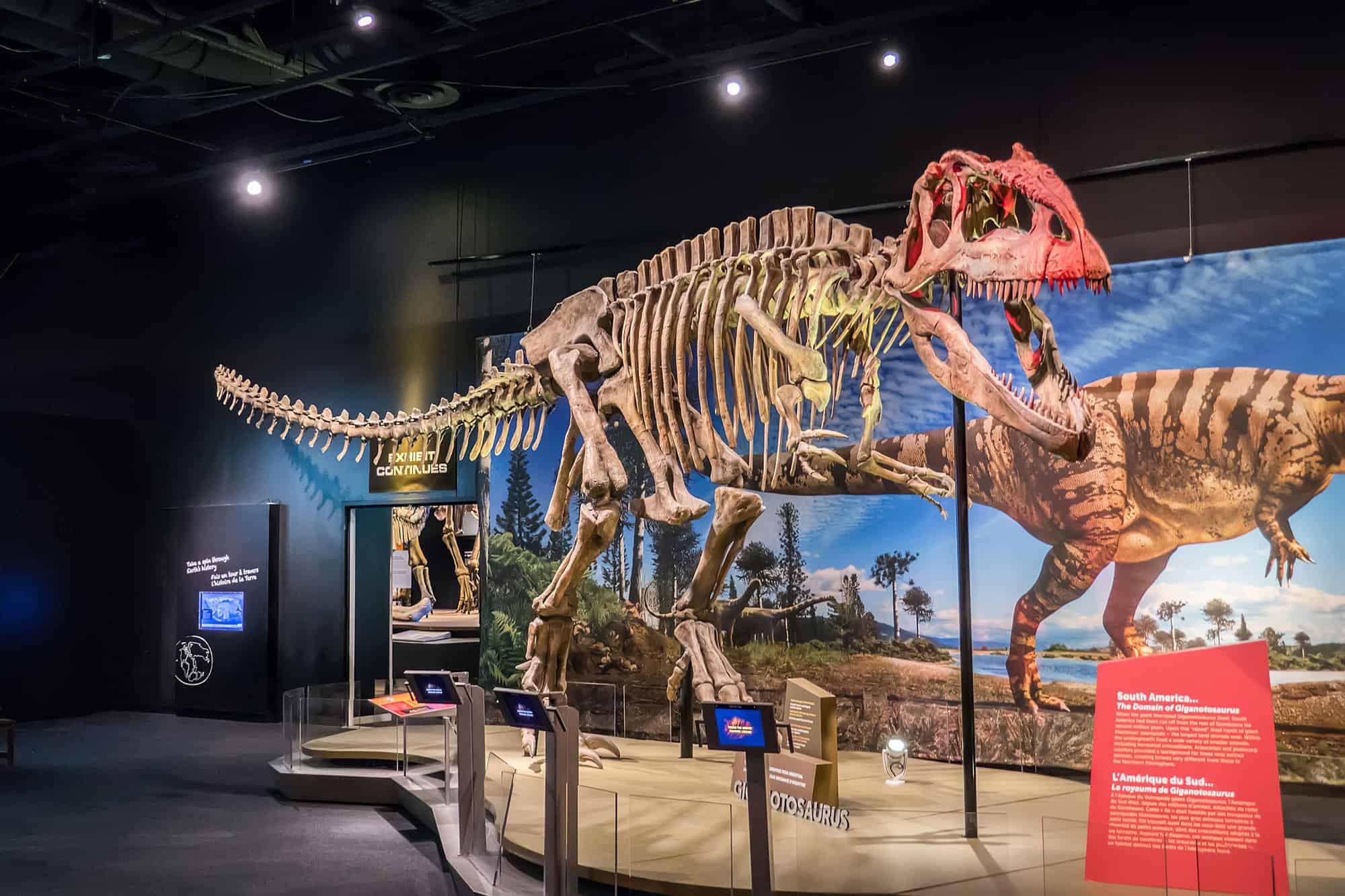Despite the sound of its name, the Giganotosaurus (Giganotosaurus carolinii) is not the biggest dinosaur that ever lived. This pre-historic creature has captured the attention of dinosaur enthusiasts, although it was discovered quite recently. The Giganotosaurus has even appeared in pop culture, such as the film Jurassic World Dominion.
These fascinating creatures were apex predators that ruled the dinosaur world during the Early Cretaceous Period. Discover the biggest Giganotosaurus remains that have ever been found.
What Is a Giganotosaurus?
The Giganotosaurus is a large theropod dinosaur that lived during the Early Cretaceous Period (112-90 million years ago). The name of this prehistoric creature is derived from Ancient Greek words which translate to “giant southern lizard” and it’s easy to see why.
Giganotosaurus measured 12.5 meters (41 feet) in length and weighed up to 8,000 kilograms (9 tons). These creatures shared a similar appearance to the more well-known Tyrannosaurus rex. They were carnivorous dinosaurs that walked on two legs.
Giganotosaurus also had short arms and sharp, serrated teeth for slicing. However, according to the National History Museum, Giganotosaurus was longer and slimmer than the T-rex. It also had three fingers on each hand, while the T-rex had two.

Giganotosaurus was longer and slimmer than the T-rex.
©KoprX / CC0 1.0 – License
Discovery of a New Species
Based on the discovery of its remains, researchers believe that the Giganotosaurus lived in South America, namely in modern-day Argentina. The first Giganotosauruas was discovered in 1993 and since then only one other specimen has been found.
Our understanding of the Giganotosaurus is mainly shaped by the remains of two individual specimens. The first is the holotype specimen discovered in 1993. Amateur fossil collector Rubén D. Carolini spotted a tibia jutting out of a stone in Argentia, writes Fossilera.
Though the bones of this species were scattered and fragmented, archaeologists eventually managed to assemble a 70% complete Giganotosaurus skeleton. Today this specimen is on display at the Ernesto Bachmann Paleontological Museum.
The Biggest Giganotosaurus Ever Found
With so few Giganotosaurus specimens in existence, it’s difficult to determine just how large this creature grew. The next significant remains of Giganotosaurus appeared near the Candeleros Formation.
Researchers collected a part of the lower jaw bone containing some teeth and identified the remains as belonging to Giganotosaurus in 1998. Though this specimen was far less complete than the holotype, it was very important in the process of determining the size of Giganotosaurus.
According to findings published by Jorge Orlando Calvo, comparisons with the holotype showed that the new specimen was the largest specimen of theropod ever found (at the time). In fact, the specimen that the lower jaw bone belonged to is believed to have been 8% bigger than the holotype.

The first fossil of Giganotosaurus was found in Argentina in 1993.
©William Cushman/Shutterstock.com
Giganotosaurus Behavior and Paleobiology
Giganotosaurus was believed to be the largest theropod dinosaur until researchers discovered more complete remains of the larger Spinosaurus in the early 2000s.
Interestingly, the Giganotosaurus had a brain only half the size of the T-Rex, relative to its body weight, writes ThoughtCo. This gives G. carolinii a relatively low encephalization quotient (EQ).
Determining the size and other information about Giganotosaurus is difficult since there are really only two notable specimens. However, researchers have determined some interesting facts.
Hunting
Based on remains from the Giganotosaurus jawbone, it is believed that these creatures had a weaker bite than the T-Rex. However, their teeth were flatter and more built for slicing and the species contained a reinforced chin.
Giganotosaurus had a wider range of sideways motion in its jaws, and a more powerful bite toward the front of the mouth, likely to aid in tearing. Additionally, these creatures had long, powerful legs, that were more adapted for running than that of a T-Rex.
It’s possible that like the related species Mapusaurus, Giganotosaurus may have worked together to take down larger prey. Giganotosaurus were apex predators who probably fed on any creature they could catch, including titanosaurs. The neck and jaws of Giganotosaurus may have been powerful enough to lift around 1,000 pounds.

Giganotosaurus ate meat and hunted large herbivorous dinosaurs.
©Michael Rosskothen/Shutterstock.com
Extinction
Of course, the Giganotosaurus’ impressive reign didn’t last, but little is known about the cause of their extinction. These creatures disappeared some 90 million years ago, around the same time that other Carcharodontosaurian dinosaurs died out.
Although Giganotosaurus is often compared to the Tyrannosaurus rex, this species actually lived about 30 million years before the T-rex. We know that the T-rex then died out during the Cretaceous–Paleogene (K–Pg) extinction event, during which a massive asteroid wiped out all non-avian dinosaurs on Earth.
The photo featured at the top of this post is © iStock.com/Elenarts108
Thank you for reading! Have some feedback for us? Contact the AZ Animals editorial team.






